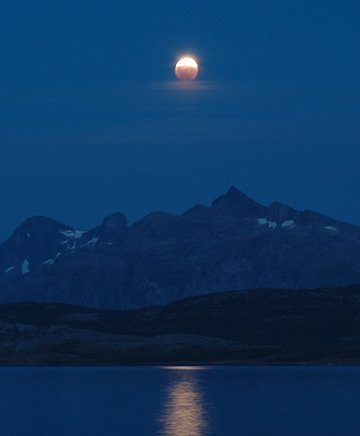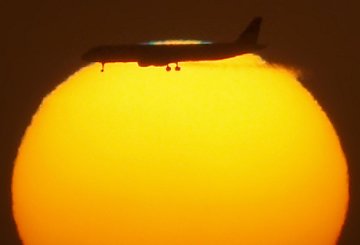| AURORA WATCH: High latitude sky watchers, be alert for auroras on August 18th. That's when a solar wind stream, en route to Earth, is expected to arrive and spark geomagnetic storms: gallery. LUNAR ECLIPSE: Last night, August 16th, the full Moon slid through Earth's shadow, producing an 81% partial lunar eclipse visible from every continent except North America. In Bodø, Norway, "the clouds parted just in time for the eclipse," says Andreas D. Skjervold. He caught this lucky shot using his Nikon D70: 
The next lunar eclipse this good won't come until Dec. 21, 2010. Enjoy the last lunar eclipse gallery for the next two years: UPDATED: Lunar Eclipse Gallery
[Interactive Eclipse Map] NEAR-MISS GREEN FLASH: On August 12th, Herfried Eisler of Amsterdam was photographing the sunset when an airplane intervened. "A band of blue-green light appeared just above the airplane's cabin," he says. "It was very pretty." 
What caused the colors? Atmospheric optics expert Les Cowley explains: "Look through a simple magnifying class and you will see objects fringed with color. Likewise, our atmosphere acts as a giant lens, and when the sun is low, the atmosphere gives it a green or blue upper rim. Usually these colorful rims are too narrow to see by eye. Here, however, the colors have been slightly spread by miraging and its just possible that the airflow over the airplane has helped. I would class this sun distortion as a 'near miss green flash.'"
2008 Perseid Meteor Gallery
[Previous Perseids: 2007, 2006, 2005, 2004, 2002, 2001] | 
